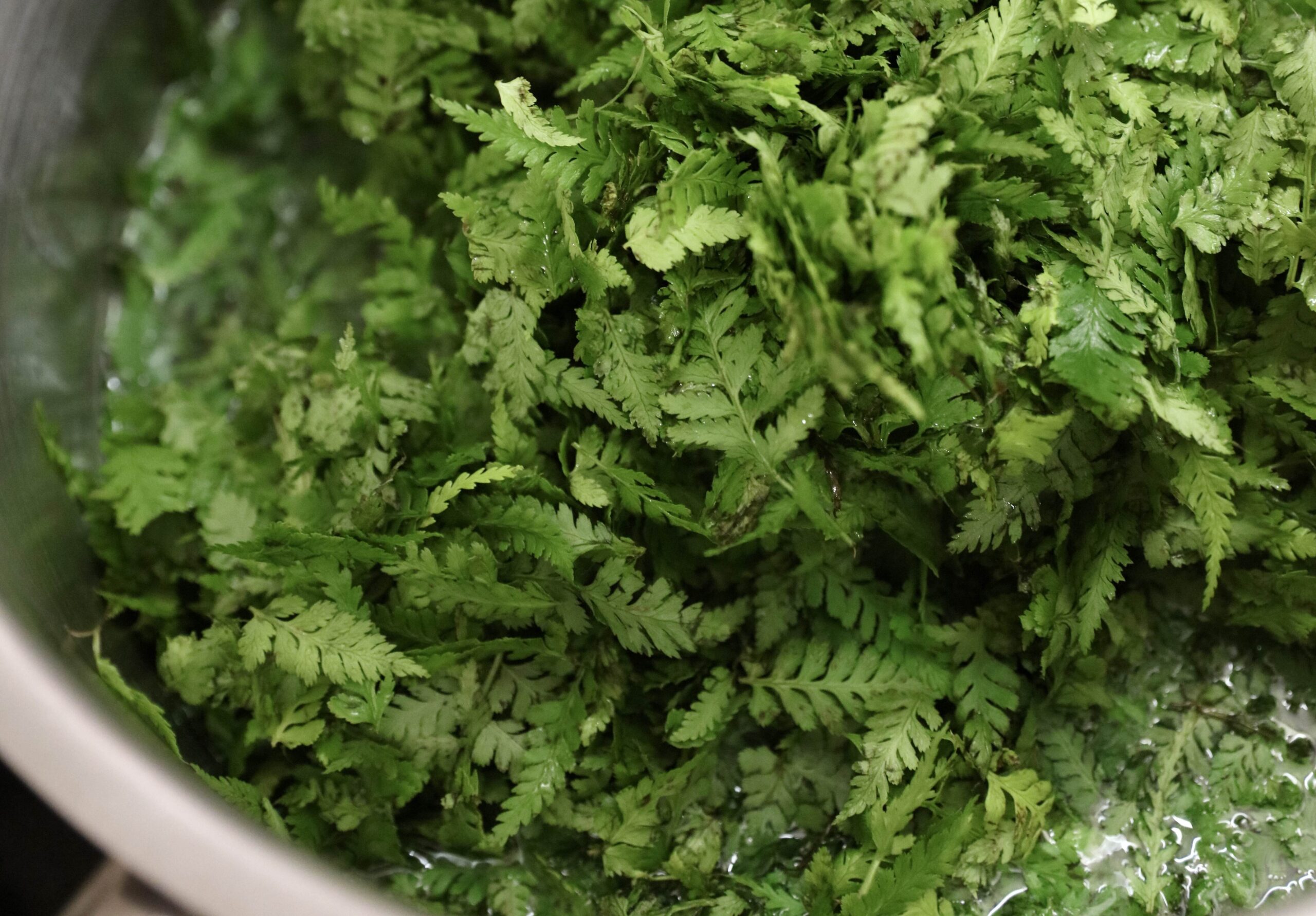
A variety of ferns are eaten in India, but there is very little documentation about them. Culinary chronicler and food writer Rushina Munshaw Ghildiyal, who has cooked with a lot of fiddlehead ferns in Uttarakhand, is primarily fascinated by akkarghoda. “It is delicate, has a limited window of availability, and a short shelf life as an ingredient. However, like all ferns, it has an amazing resilience that allows it to retain its texture through longer [periods of] cooking,” she says.
Pickling akkarghoda is Rushina’s attempt at preserving the fern’s beautiful texture and flavour – tasting like a combination of green beans and asparagus. The pickling also lets her make it available well past its growing season during the monsoons, satisfying her love for it throughout the year.
| Akkarghoda | 500-600 grams |
|---|---|
| Refined cooking oil | 1 cup or 200 ml approx. |
| Karale (Niger) seeds | 2 tablespoons |
| Green chillies, smashed | 10-15 pieces |
| Garlic cloves, smashed | 1 cup or 140 grams approx. |
| Ginger, smashed | 1½ cup or 50 grams approx. |
| Turmeric | 1â„2 teaspoon |
| Salt | 1-2 tablespoons |
| Karale (Niger) oil | ¼ cup or 50 ml approx. |
| Mahua oil | ¼ cup or 50 ml approx. |
What You Will Need
Clean pickling jar of 1 kg capacity, frying pan, strainer
Instructions
Clean the akkarghoda by pulling off all the small tender ferns and discarding mature stems and blackened leaves. Wash well in running water and leave to dry.
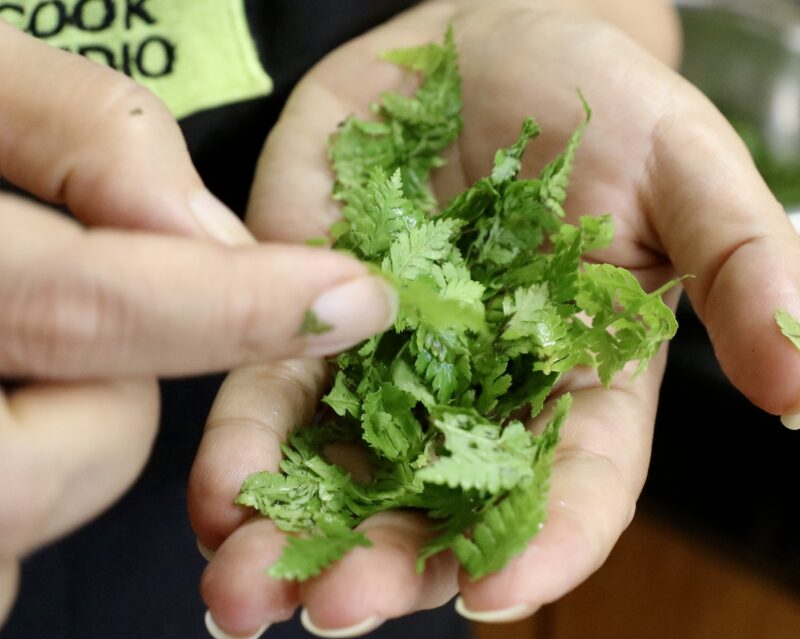
Heat the oil in a large pan. When hot, add the akkarghoda. Stir-fry until its juices are released and reduced.

Strain out the leaves into a bowl. Ensure that as much of the liquid is extracted from the leaves as possible.

In the same pan, dry out any remaining juices and add 2 tbsp of oil. When hot, add the karale seeds and let them splutter. Then add the green chillies, garlic and ginger and cook until the chillies are blistered and the garlic is golden at the edges.
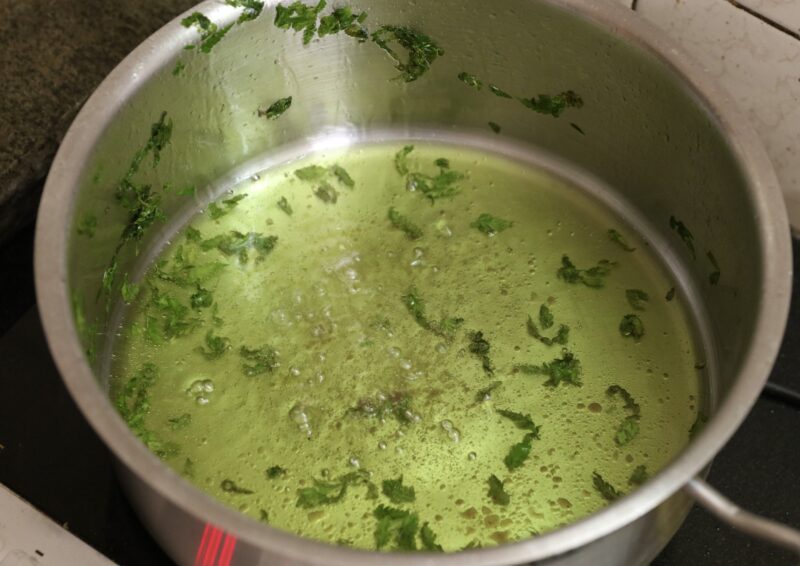
Add the turmeric and the cooked akkarghoda back to the pan. Cook slowly till the leaves are well fried. Add the salt and mix well. Be careful to dry out all the moisture but not overcook the leaves.
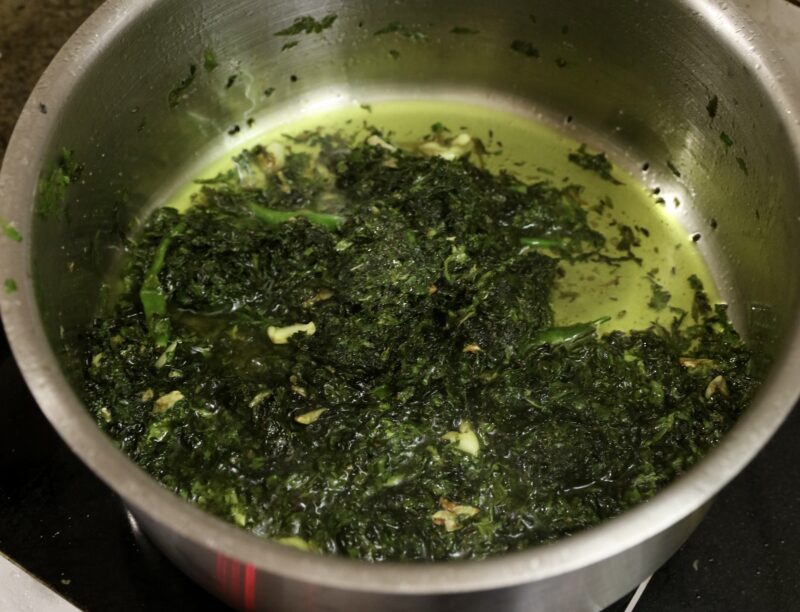
Take off the flame, cool, and stir in the karale and mahua oils. Transfer to a clean jar and let it cool completely. Put the lid on and refrigerate.
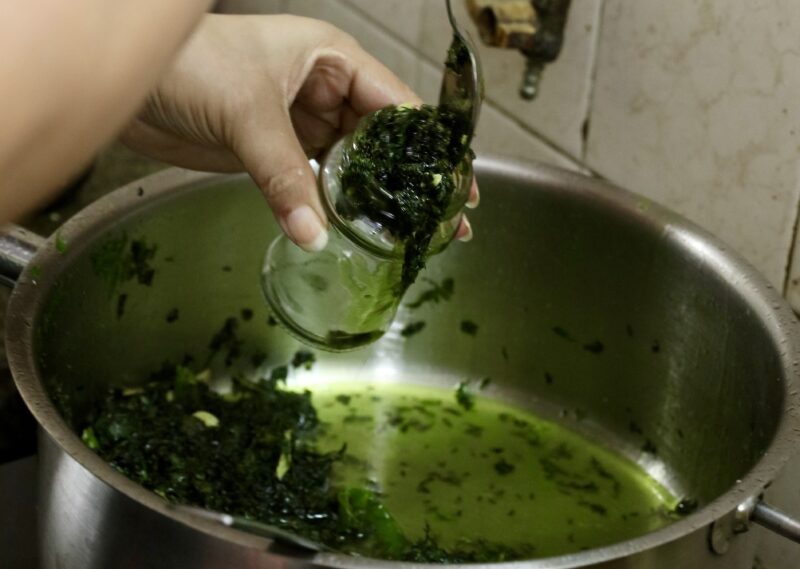
Note:
This recipe was published as a part of a zine published during the Wild Foods Project, which was conducted in partnership with OOO Farms in Palghar during the monsoon of 2022.
Rushina Munshaw Ghildiyal (@rushinamg) is a culinary researcher, chronicler and a consultant with over 15 years of experience in the food industry. She has extensively documented the culinary traditions and heritage of various cultures across India, focusing on her home regions of Gujarat and Uttarakhand. She owns A Perfect Bite ® Consulting, and has worked on projects such as the annual Godrej Food Trends Report.
You must be logged in to rate this recipe.

Sign in with email

